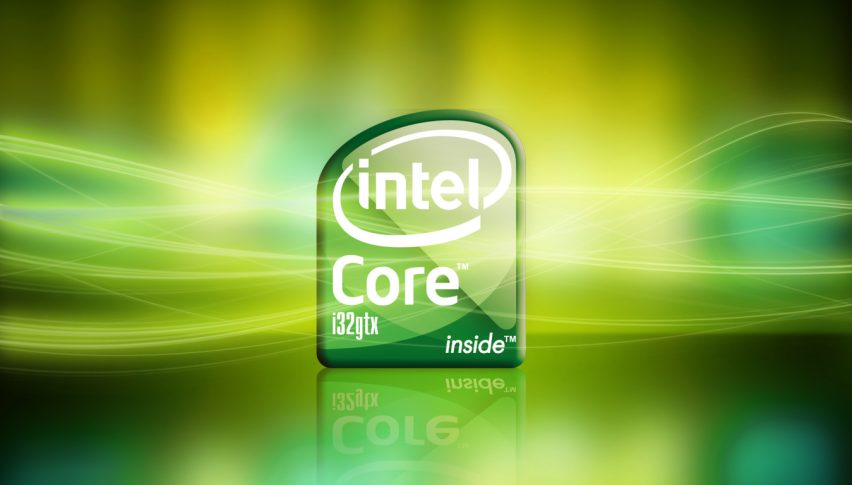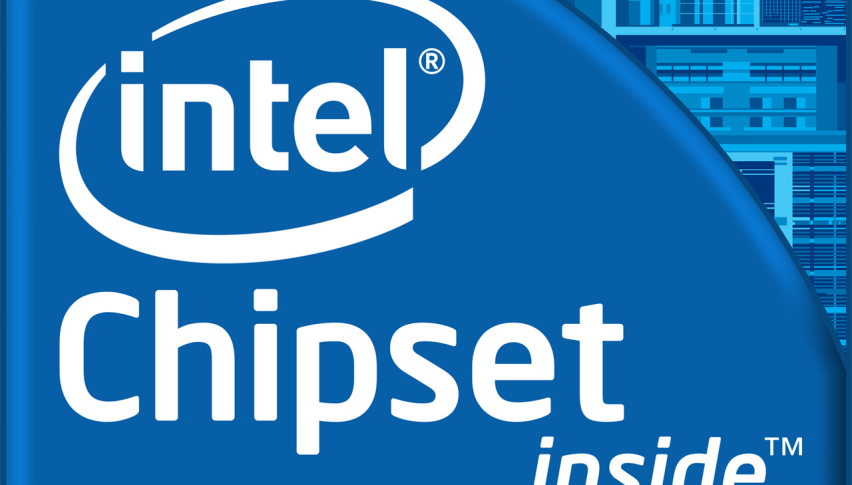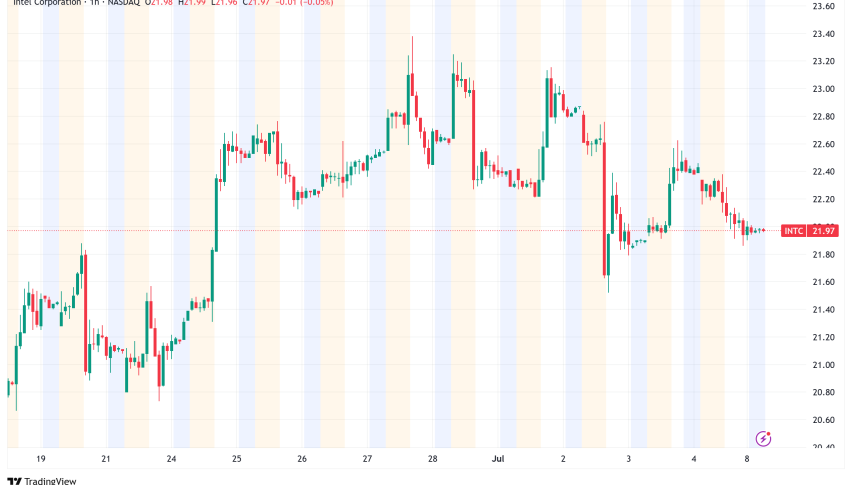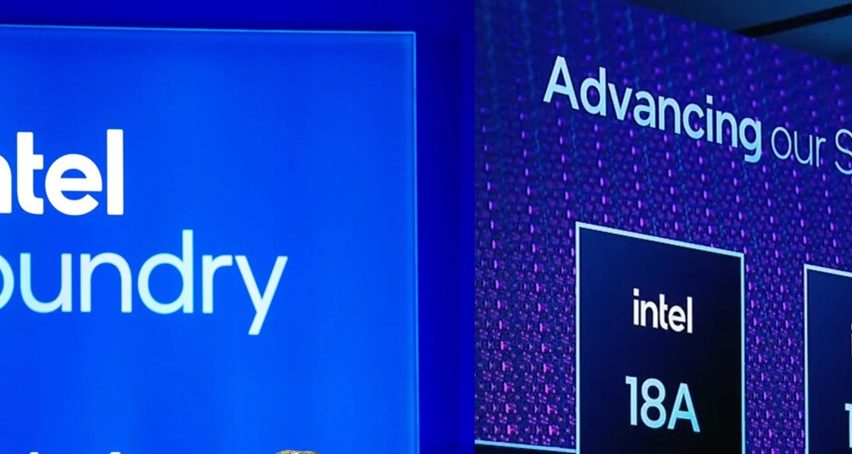Bearish INTC Signals Rise as Intel Stock Heads to Support and Units Face the Chop
Intel’s stock remains locked in a sideways grind as strategic restructuring under new leadership adds uncertainty to its technical outlook..

Quick overview
- Intel's stock is experiencing a sideways trading pattern, trapped between the lower $18s and upper $26s since August 2023.
- Recent price action indicates growing downward pressure, with a bearish reversal pattern forming and the stock closing at $20.05.
- The company is undergoing significant restructuring under new CEO Lip-Bu Tan, focusing on core competencies and potentially selling off non-core businesses.
- Investor sentiment remains weak, and a decisive drop below the $18 support level could lead to further technical breakdowns.
Intel’s stock remains locked in a sideways grind as strategic restructuring under new leadership adds uncertainty to its technical outlook and future growth trajectory.
INTC Price Struggles Amid Narrowing Trading Range
Intel Corporation (NASDAQ: INTC) has seen little sustained direction in its stock since August 2023, remaining trapped within a broad sideways channel between the lower $18s and upper $26s. Yet a closer look at price action shows that the peaks are consistently falling, signaling growing downward pressure and waning bullish momentum. While the range itself hasn’t been broken yet, recent developments suggest that the chipmaker may be heading toward a decisive test of its long-standing support levels.
The latest recovery attempt in April came after Intel bounced off the critical $18 price floor. That rally, however, stalled beneath the 50-week simple moving average (SMA)—a technical ceiling that has repeatedly capped gains and now appears to be pulling highs even lower. Despite the temporary lift, buyers were unable to push the stock above resistance, leaving the company vulnerable to another wave of selling.
Intel Chart Daily – INTC Technical Outlook Tilts Bearish
By the close of trading last week, a bearish reversal pattern had formed. After printing a morning star candlestick at $21.66, Intel followed with a steep bearish weekly candle, further reinforced by a gap-down open on Monday to $21.18 following a downgrade to U.S. government debt. That bearish momentum persisted, and by Friday, Intel’s share price had dropped to $20.05.
Although the broader trading range remains technically intact, recent price action is increasingly concentrated in the lower half of the range. The 50-day SMA, once the primary ceiling for price recovery, has now been overtaken by the 20-week SMA, which capped the bullish moves this week. The lack of follow-through on bullish setups suggests that investor conviction remains weak.
If Intel were to fall decisively below the $18 support level, it could trigger a more pronounced technical breakdown, especially if macroeconomic conditions or corporate developments intensify investor concerns.
Restructuring Under New Leadership
While the technical picture may be deteriorating, the company is simultaneously undergoing significant internal changes. Under new CEO Lip-Bu Tan, Intel is actively reshaping its business to hone in on core competencies. In line with this strategy, the company is reportedly weighing the sale of its networking and edge businesses—formerly grouped under the NEX division, but since merged into broader categories as part of Intel’s organizational streamlining.
This move follows Tan’s broader vision to eliminate distractions and refocus Intel on key strengths: PC central processing units (CPUs), data center CPUs, and manufacturing. Earlier in his tenure, Intel offloaded a majority stake in Altera, a prominent player in the FPGA space, as part of this same pivot.
In 2024, the NEX division generated $5.8 billion in revenue and contributed $931 million in operating income. While those numbers reflect meaningful topline contributions—approximately 12% of Intel’s total product sales—they account for just 7% of the company’s total operating profit. This illustrates the limited profitability of these ancillary businesses compared to Intel’s core CPU segments.
Outlook Hinges on Execution and Broader Conditions
As Intel realigns itself internally, markets appear to be waiting for stronger signs of execution or a strategic catalyst to reawaken bullish sentiment. Until then, the technical landscape remains fragile, and the prospect of a breakdown below long-held support cannot be ruled out. The combination of weak investor momentum, structural divestitures, and resistance near moving averages continues to weigh heavily on the stock’s near-term outlook.
- Check out our free forex signals
- Follow the top economic events on FX Leaders economic calendar
- Trade better, discover more Forex Trading Strategies
- Open a FREE Trading Account



